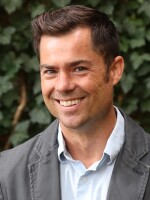They gathered at Ah-Nab-Awen Park along the banks of the Grand River downtown by the hundreds. Some sat in the grass, some stood. Most wore red. It was the second annual gathering in the city for Missing and Murdered Indigenous Persons Awareness Day.
“We’re here to gather peacefully for our missing and murdered relatives,” said Melissa Isaac, an organizer of the event and citizen of the Saginaw Chippewa Indian Tribe. “We’re here to bring awareness for people who still don’t know, because we continue to be invisible, for a lot of reasons.”
The federal Bureau of Indian Affairs reports a study in 2016 found thousands American Indian Alaskan Native women and girls went missing, and only a fraction of the cases made it into a national database meant to help find missing persons.
Since then, the federal government has been making efforts to address the crisis of violence facing people in the Native community. This year, the Biden administration issued its annual proclamation to mark Missing or Murdered Indigenous Person’s Day, calling the problem an “epidemic." It pledged more federal support to address the violence, and to get justice for victims and survivors.
"We’re going to have to provide some way for our people to feel like they’re safe in their own communities.”Jamie Stuck, Tribal Chairman of the Nottawaseppi Band of Huron Indians
“This battle is going to be fought on many front lines,” said Jamie Stuck, chairman of the Nottawaseppi Huron Band of the Potawatomi, Friday, at the event in Grand Rapids. “It’s going to be fought in the streets at the grass-roots level. It’s going to have to be fought in the courtroom. It’s going to have to be fought with our legislature, both at the state level and the federal level. And we’re going to have to provide some way for our people to feel like they’re safe in their own communities.”
Just this week, the Saginaw Chippewa Tribal Police Department announced it was working with the Mount Pleasant Police Department on a new missing persons case. Patricia Leigh Jackson has since been found safe, according to an update on the Tribal Police Facebook page.
But for many at Friday’s event, there are still far too many cases of missing or murdered family members. The stories hit close.
An enduring hope
“I don’t know how many times we turn on our social media within the native communities and you see someone missing,” said Bob Peters, tribal chairman for the Gun Lake Tribe. “You hear of someone else that’s been lost for months, or murdered. Earlier this year, it’s even impacted my family, first-hand.”
Peters said he struggled to explain to a nephew that a family member had been murdered.
“I would hope that one day we can come here and celebrate the last time that we see this,” Peters said.
It was a hope generations in the making for many at Friday’s event. The park where they gathered, named Ah-Nab-Awen, or “resting place,” was once the site of burial mounds for the first people of Grand Rapids. Those mounds were leveled as the growing settler community built roads and launched new businesses on the west side of the river in the 1800s.
Charles Belknap, a white settler for whom a neighborhood of the city is still named, wrote of the mound removal in his book, The Yesterdays of Grand Rapids.
“Entire cart-loads of grinning skulls and ancient bones came to light,” Belknap wrote.
His account suggests that the sight of the remains was too much for some of the Irish workers, though admits that he kept some of the skulls for himself.
“By the time of the Civil War I had accumulated so many relics from the mounds that the attic of our home was full of skulls with grinning teeth, arrowheads, bits of pottery, smoking pipes of clay, and stone implements,” Belknap wrote.
"You're all here"
Locating and returning the remains, and other cultural artifacts, is an active and pressing issue in many native communities. A total of 32 institutions in Michigan reported holding Native American remains, according to a database maintained by ProPublica. Of the more than 3,000 remains held by those institutions, about 78% has been returned, according to ProPublica.
The issue of Native remains stolen centuries ago is not entirely separate from the issue of seeking justice for murdered or missing Indigenous people today, said Nancy Smit, tribal secretary of the Nottawaseppi Band of Potawatomi Indians.
“Whether we go back in the past, or even today, there are people all across the nation that are looking for their family,” Smit said at Ah-Nab-Awen Park on Friday. “This is meant for them also.”
Following a traditional grand entry, a water blessing, speeches, prayers and singing, the hundreds gathered at Ah-Nab-Awen Park started off on a March through the streets of Grand Rapids. The procession of marchers stretched for an entire city block. Organizers pointed out that while the reason for the gathering was solemn, the gathering could also be a place of joy and healing.
“We are not our pain stories,” said Isaac. “That does not define who we are. That’s evident today here, because you’re all here to fight against that pain.”




